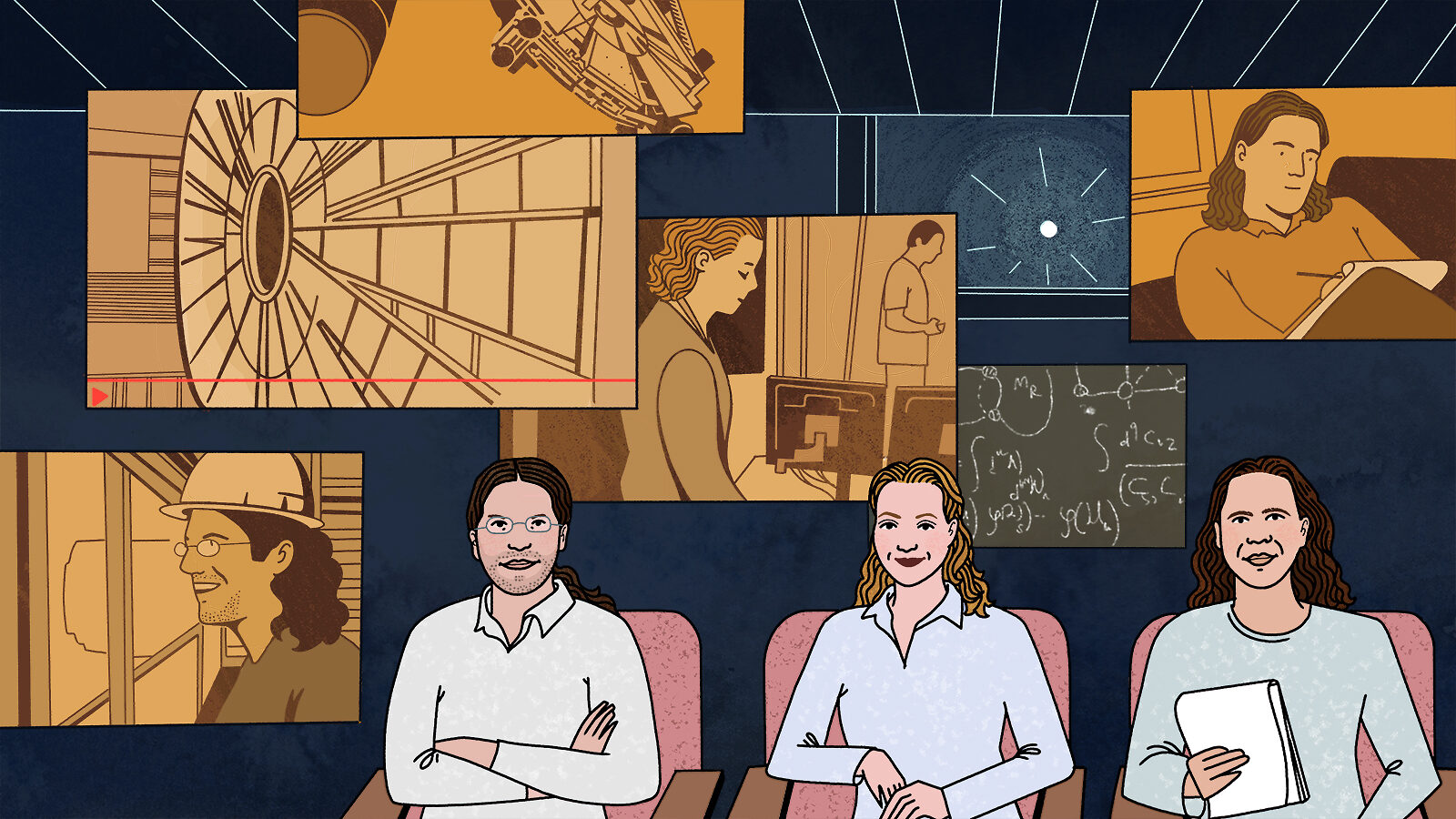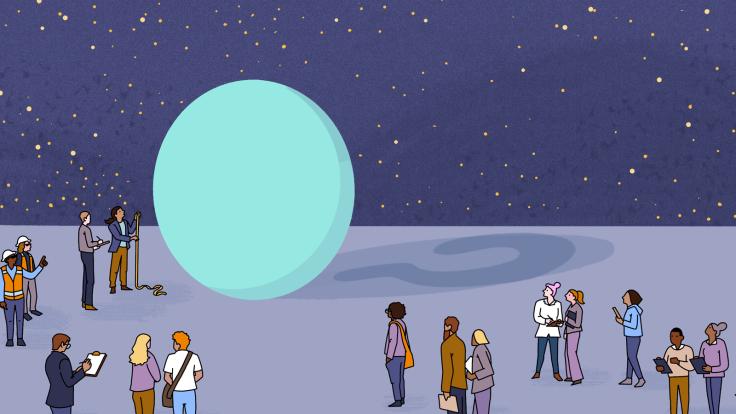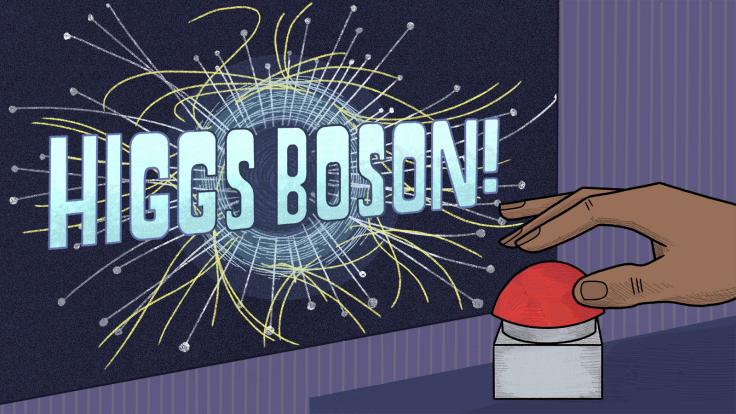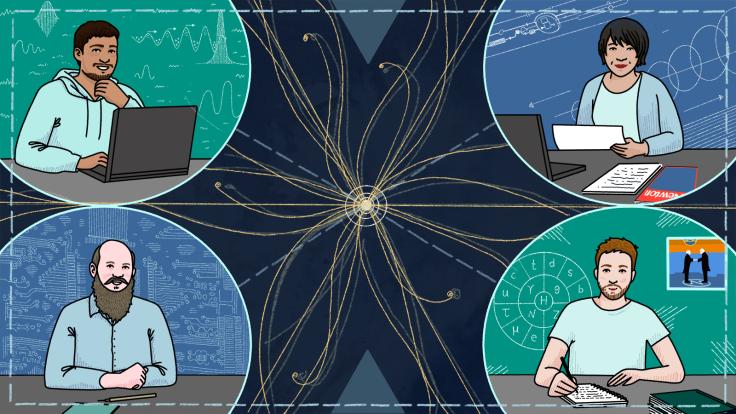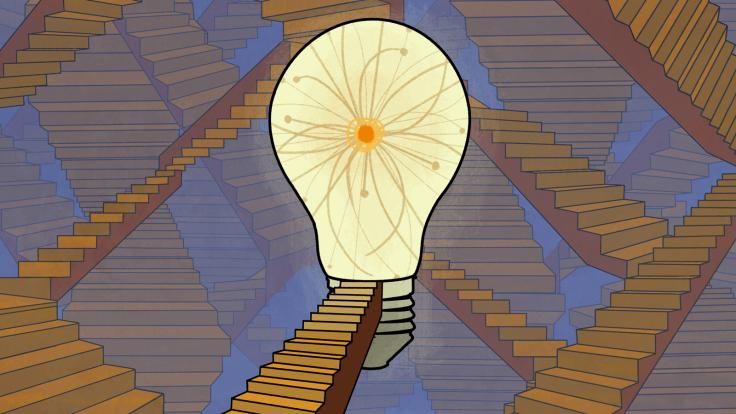Physicist Monica Dunford remembers when the CERN press office asked her if she wanted to be interviewed by a visiting documentary film crew. It was 2007, and she had just arrived at CERN as a postdoc on the ATLAS experiment.
“I thought I would do this interview and that would be that,” she says. “I didn’t know it would be 100 hours of filming.”
Six years later, Dunford watched herself on the big screen as the feature-length documentary Particle Fever premiered at Sheffield International Documentary Festival, one of the largest and most influential documentary film festivals in the world.
“People would recognize me,” she says. “I remember thinking, I never want to be famous. I just want to have my breakfast, and nobody knows who I am.”
The 2013 documentary Particle Fever follows a handful of experimental and theoretical physicists during the lead-up to the discovery of the Higgs boson, the last predicted piece of the Standard Model of particle physics. It captures the excitement of the Large Hadron Collider starting up, the despair when a faulty weld destroyed several magnets, and the utter joy when scientists finally announced the discovery of the Higgs.
It's a human-centered story. “We constructed the story with as little physics as possible,” says producer David Kaplan, a theoretical physicist who also appears in the film. “Once the story was there, we put in just enough physics to explain the emotional content of the film.”
Over the last 10 years, the LHC research program has moved beyond the search for the Higgs, and so have the physicist featured in Particle Fever. Today, Symmetry checks in with experimentalist Monica Dunford and theorists David Kaplan and Nima Arkani-Hamed to see how their lives, work and perspectives have evolved since filming wrapped in 2012.
Monica Dunford
Professor, Heidelberg University
Experimental physicist, ATLAS experiment
When Particle Fever was filmed, Dunford had just gotten her PhD and was working as a postdoc on the ATLAS experiment with the University of Chicago. Physics and her physics community were everything.
“We would blur from the control room to a bar somewhere and then to a hiking trip, like a massive family,” she says. “I look back at that time, and it feels like my 20s. It was very intense. But it wasn’t sustainable.”
Today, Dunford is a physics professor at Heidelberg University. She sees that same electricity in her students. But her priorities have changed.
“I’m not in my 20s—and don’t want to be in my 20s—anymore,” she says. “I like my expensive wines.”
Her focus has shifted from hands-on analysis work to leadership. In October Dunford will take on the role of ATLAS Physics Coordinator, which means overseeing the physics output from ATLAS’s 3,000 scientific authors. As a professor, Dunford mentors students and postdocs as they explore big questions, such as links between particle physics and cosmology. Becoming a professor also means new responsibilities, such as grant-writing, administrative duties, and teaching. Instead of excitedly showing colleagues her plots in the ATLAS Control Room (as she does in Particle Fever) Dunford is focused on cultivating the next generation of physicists.
“I am a strong believer that the world rides on its youth,” she says.
Dunford’s personal life has also evolved. In Particle Fever, Dunford is filmed biking, running and rowing. While she’s still very active (and hopes to complete an Ironman one day), she now has a family with two small kids.
“Back in Geneva, we would do 20-mile hikes and up god knows how many meter mountains,” she says. “With kids, it takes us about six hours to do 3 kilometers. There are stones to pick up, and then rivers to throw stones into. It’s a different pace.”
As Dunford has matured, so has her perspective on physics. In Particle Fever, Dunford says on camera that finding the Higgs boson—and only the Higgs boson—would be the worst-case scenario for the LHC. She was confident that the LHC would find many new particles, as predicted by the popular theory of supersymmetry, which would resolve many questions in fundamental physics. A decade (and no supersymmetric particles) later, her perspective is more nuanced.
“The world is more complicated, and that’s OK,” she says. “I’ve come to see that it’s more interesting this way.”
David Kaplan
Professor, Johns Hopkins University
Theoretical physicist
Theoretical physicist David Kaplan wasn’t just a subject of the documentary Particle Fever—he was also the originator of the film.
“In 2006 I decided to make this movie, and I was going to do it all by myself,” he says.
After talking with his sister in Los Angeles, he quickly scrapped the solo plan. For the next seven years, Kaplan worked with an evolving team of filmmakers, including director Mark Levinson and Academy Award-winning editor Walter Murch. In 2013, their documentary premiered at the Sheffield DocFest. Kaplan remembers feeling both excited and nervous.
“It was unnerving to watch myself,” Kaplan says. “The showing was jam-packed with a line out the door. It was the first time I was seeing the completed film.”
Particle Fever was a huge success, going on to win awards at film festivals around the world. Kaplan says he still gets recognized today. “People will still come up to me at conferences to say that they saw Particle Fever in high school and it inspired them to do physics,” he says.
When Kaplan started making Particle Fever, he was an assistant professor at Johns Hopkins University with two little kids. Today, his kids are in their 20s and his family has grown to include two stepchildren as well (now also in their 20s). Kaplan is still a professor at Johns Hopkins University, the only difference is that he now has tenure.
“I’m still just a normal professor,” Kaplan says. “Nothing changed that way. But my attitude toward research has changed.”
Before Particle Fever, Kaplan says he primarily looked for research projects that he could wrap up over a six-month period. “Our field has this addiction to citations, which forces you to think short-term,” he says. “You take a quick idea and turn it around into a quick paper.”
Particle Fever was the first time Kaplan was able to take a big, exciting, and somewhat nebulous idea and run with it to completion.
“Particle Fever was a huge success, and it took seven years,” he says. “Now, if I see something really important and worthwhile, then I’m going to go after it, even if it will take years.”
He’s shifted his focus from model-building to pondering big structural problems in physics with his postdocs and students. “I’m not just looking for something different but thinking about our approach—what our real goal is,” he says. “It’s possible to solve harder problems if you spend more of your time on it.”
Nima Arkani-Hamed
Professor, Institute for Advanced Study in Princeton
Theoretical physicist
In Particle Fever, theorist Nima Arkani-Hamed says on camera, “I’ve spent the last 15 years thinking about the LHC.”
Today, he’s still thinking about collider physics, but from different points of view. “I still think about the same questions,” he says. “The questions are really big and take a long time to solve.”
One of these questions is the extent to which nature is governed by elegant principles, and the extent to which everything is the result of random (and happy) accidents. Particle Fever explores this dilemma during a scene in which Arkani-Hamed and Kaplan play ping-pong in a game of “multiverse versus supersymmetry.”
Arkani-Hamed represents the idea that our universe is just one of infinite universes, all with their own rules of physics. Kaplan represents supersymmetry, a theory that neatly tidies up much of the messiness of the Standard Model of physics. But at the time of filming, Arkani-Hamed was actually toying with a conglomerate of both.
“Before the LHC turned on, I wrote a paper with Savas Dimopoulos—another theorist in the movie—about a version of SUSY inspired by the multiverse,” he says. “It was really radical and it took us a long time to get those two words in the same sentence. It was very unpopular at first. It was the only time in my life that I’ve been yelled at during a conference. But this theory ended up being studied actively.”
This so-called split-SUSY embraces the elegance of supersymmetry while simultaneously leaning into the chaos of the multiverse. Unlike more conventional forms for supersymmetry, it hasn’t been ruled out by the LHC (and was actually bolstered by measurements of the Higgs mass, according to Arkani-Hamed).
Arkani-Hamed still feels split-SUSY could be an underlying feature of nature. While he waits for experimental results, he’s exploring new frontiers.
After the LHC turned on, Arkani-Hamed spent three years developing and communicating the theoretical motivation for a next-generation supercollider. His primary focus was the proposed Circular Electron Positron Collider in China.
“I was flying back and forth a lot between Newark and Beijing,” he says. “You get on the flight, you get your Coke from the flight attendant, you watch all three Lord of the Rings movies back-to-back, and then you only have another four hours to go.”
Now that the physics case is made, he has taken a step back as international organizations and government agencies take the next steps forward. “I’m not good at politics,” Arkani-Hamed says.
Over the past decade, Arkani-Hamed’s theoretical research has shifted to investigating physics at the most basic level: the interactions of subatomic particles. Arkani-Hamed and his collaborators are hoping to find a new mathematical understanding of particle interactions that will help scientists reverse-engineer the properties of two things that are even more fundamental: spacetime and quantum mechanics.
“At the deepest level, everything is governed by spacetime and quantum mechanics,” he says. “Thinking about the origins of spacetime and quantum mechanics has always been part of my grand plan, ever since I was an undergraduate.”



